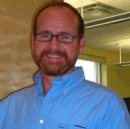The theme this week in CEDO 565 is change. If you think about it, change is happening all the time. But how do we as individuals and leaders react to change? The class had a good time viewing and reflecting on the parable 'Who Stole My Cheese?'. The cheese represents the things that nourish us in life. The cheese may be a job which provides income or something we want or need to have. One can become complacent and imagine that things will always stay the same, but they never do, but change happens.
How well an organization plans for change depends on its corporate culture. If a business continually seeks-out new markets and tries new ventures, then it might be successful some of the time. That's right, some of the time. New opportunities are often hidden inside a maze. It takes teams, comprised of diverse personalities and life experiences, working together to expand organizational interests. Marketing, Sales, Research and Development working in unison to find rich, new niches. Businesses that continue to produce the same product, services and solutions will continue to do the same until there is no more customer demand and they find that they are, surprise, out of business.
A few years back I worked for Packaging Corporation of America (PCA). The new CEO, Monte Hayman, had just started and reviewed the rather flat sales and asked the executives in a meeting, 'What business are we in?' Can you imagine the funny looks that were exchanged by the older executives as they pondered this obvious question from the new, and no doubt inexperienced, CEO? Every single one said, 'We make corrugated cardboard for boxes'. Monte Hayman stood in front of them and said, 'Wrong! We are in the Packaging Industry'. Monte directed the executives to seek-out new opportunities that went beyond manufacture of container board. Within a year PCA had acquired 12 molded fibre plants (think egg cartons) and several plastic packaging plants.
In just 2 years PCA doubled sales from one to two billion dollars. The 1990's saw clear plastic food packaging become the new normal. Today, supermarkets sell prepared foods in plastic containers and molded fibre egg cartons constitute half the selection in the Dairy Case. And how are these items shipped in bulk to stores? Why they arrive in heavy corrugated cardboard boxes also manufactured by PCA.
I tell this story because it captures the essence of what this past week has been about in our course: Leadership and Change. At PCA the old guard was complacent with flat sales and doing business the way they always had. The new CEO transformed the corporate culture by helping them see opportunities beyond the doors of their manufacturing plants. The resources of a sleeping giant awoke and went to work researching and acquiring capital investments that enhanced PCA's market share in the Packaging Industry. It was an exciting time to work at PCA but not all of the employees were thrilled. Many were happy with the old ways while others were empowered and eager to tackle new challenges. When it comes to change some will always resist while others embrace it. Thanks to good leadership, PCA not only survived---it thrived.







Here is my blog translated from plain English to Text Messaging format.
ReplyDeleted theme dis wk n CEDO 565 S chng. f u tnk bout it, chng S hapNg ll d tym. bt hw do we as individuals n leadAs react 2 chng? d cls had a gud tym viewing n reflecting on d parable 'Who Stole My Cheese?'. d cheez reprsnts d fings dat nourish us n lyf. d cheez may B a job wich provides income or somit we wnt or nd 2 av. 1 cn Bcum complacent n imajn dat fings wl alw stay d same, bt dey nvr do, bt chng hpns.
hw wel an org plnz 4 chng Dpnds on its corporate culcha. f a biz continually seeks-out nu marts n triS nu ventures, thN it myt B successfule sum of d tym. dats ryt, sum of d tym. nu opertntys r ofn hidN NcyD a maze. It tAkz teams, comprised of diverse personalities n lyf xprncs, gung-ho 2 Xpnd organizational intrests. mrktN, Sales, R&D wurkn n unison 2 fnd :-$$$, nu niches. Businesses dat contu 2 produce d same product, services n soln’s wl contu 2 do d same 'til there's no mor cust dm& n dey fnd dat dey r, surpriz, outa
A few yrs bac I wrkD 4 Packaging corpN of USA (PCA). d nu CEO, Monte Hayman, had jst strtd n reviewd d rthR fl@ sales n askD d suits ina mtg,'What biz r we n?' cn u imajn d funE l%ks dat wr xchangd by d oldA suits as dey pondered dis oBvius Q frm d nu, n no doubt inxperienced, CEO? evry sngl 1 z, 'We mke corrugated Cardbord 4 boxes'. Monte Hayman stood n frnt of em n z, 'Wrong! w'r n d Packaging Industry'. Monte directed d suits 2 seek-out nu opertntys dat went Byond make of container board. witn a yr PCA had acquired 12 molded fibre plants (think egg cartons) n sevrl plastic packaging plants.
n jst 2 yrs PCA dbled sales frm 1 2 2 billion $. d 1990's saw clr plastic f%d packaging Bcum d nu norml. 2day, supermarkets sell prepd f%ds n plastic containers n molded fibre egg ctns constitute 1/2 d selection n d Dairy Case. n hw r deez items shipped n bulk 2 stors? Y? dey ariV n hvy corrugated Cardbord boxs also manufactured by PCA.
I tel dis story coz it captures d nub of w@ dis past wk hs bn bout n r corZ: Leadership n chng. @ PCA d old gard wz complacent W fl@ sales n doiN biz d wa dey alw had. d nu CEO trans4med d corporate culcha by helpin em C opertntys Byond d doors of their mfg plants. d resources of a zzz giant awoke n went2 wrk researchn n aquirin capitl investments dat nhnced PCA's mkt share n d Packaging ind..twas an XcitN tym 2wrk @ PCA bt nt ll of d employees wr thrilled. mnE wr hpE W d old wAz yl othas wr empowered n Egar 2 tackl nu chalNgs. wen it cums 2 chng sum wl alw Rsist yl othas Mbrace it. tnx 2 gud leadership, PCA nt 1ly survived---it thrived.
Your story about PCA's new CEO driving the company forward reminds me of something from psychology and story forming theory (meaning how to best create a work of fiction or some other genre’). Because I’m more of a story forming analyzer and writer, I’ll center my response along those lines.
ReplyDeleteAll stories have several specific parts to make them work. If a story seems weak or simply bad, it’s probably because it has either left out one part or did not development that part or parts very well. A part (or element) that is central to every story is whether or not the protagonist is a “Do-er” or a “Be-er.” A Do-er character is one that actively seeks to change a situation rather than always reacting to it. For instance, Homer, in the movie October Sky, actively seeks to avoid working in the coalmine like his father did. Homer seeks to enter the science fair, win it, and earn a scholarship for college. He constantly pushes forward, trying to overcome technology or physics problems. He strives to achieve his goal. He “did” much. He was a do-er. On the other hand, Luke Skywalker in the New Hope episode of Star Wars, starts off simply living with and reacting to the situations pushed upon him by the Empire and his uncle. He was more content to simply deal with what came his way and live in that environment or situation.
Employees that are not motivated to change or manipulate their environments are Be-ers, while those that seek to change the conditions, or manipulate the externals, are the Do-ers. Companies need both types, but one does not want them in R&D, sales, and as the CEO. They should probably not be in the IT department as well.
Lenn,
ReplyDeleteThanks for sharing the insights as a story forming analyzer. Great contrast between Homer the Do'er and Luke the Be'er. I enjoyed October Sky because I used to build model rockets. I like how you applied that to business units in the end. Thank you for a very thoughtful lesson in story forming and the analysis - that was GR8!